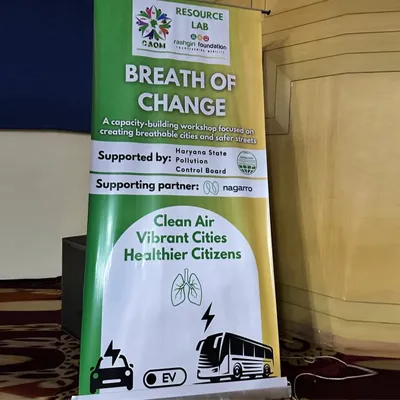The event was organised through the CAQM Resource Lab, set up in collaboration with the Raahgiri Foundation and supported by the Haryana State Pollution Control Board (HSPCB). It forms part of a broader series of workshops being conducted across nine NCR cities — Delhi, Gurugram, Faridabad, Sonipat, Noida, Greater Noida, Ghaziabad, Bhiwadi, and Neemrana — aimed at promoting sustainable road design and dust control practices.
The initiative is linked to the implementation of a Standard Framework developed by CAQM for road design and (re)development in these cities to help reduce dust-related emissions and improve urban air quality.
The first day of the event, held in Faridabad, focused on empowering engineers and urban officials with the technical knowledge and practical tools required to adopt dust mitigation strategies and sustainable street planning. The Commission underscored the importance of the CAQM Resource Lab as a platform for knowledge-sharing and field-based demonstrations.
Government representatives, engineers, and enforcement agencies participated in technical sessions and practical exercises, covering topics such as sustainable road design, dust abatement techniques, and preparation of Detailed Project Reports (DPRs) for cleaner, safer, and more walkable streets.
The second day in Gurugram featured interactive IEC activities, including a walk-shop, art installations, and air pollution mitigation games. Participants explored Haryana’s first Model Street, which serves as a blueprint for sustainable urban design in the NCR. The model integrates walking and cycling tracks with public transport, features bioswales for rainwater absorption, extensive plantation for dust and pollution control, and prioritises universal accessibility and women’s safety.
The Haryana event follows similar workshops conducted across other NCR cities, underscoring CAQM’s commitment to building capacity and implementing citizen-centric solutions for air pollution reduction.
According to CAQM, the Resource Lab will continue to serve as a training and demonstration hub, driving the dissemination of best practices in sustainable road design and pollution mitigation. It will further support hands-on training and targeted awareness campaigns to strengthen public understanding of air quality management and sustainable urban development.
Through these efforts, CAQM aims to foster collaboration between state governments, local agencies, and communities to achieve cleaner, healthier, and more inclusive urban spaces across the NCR.


